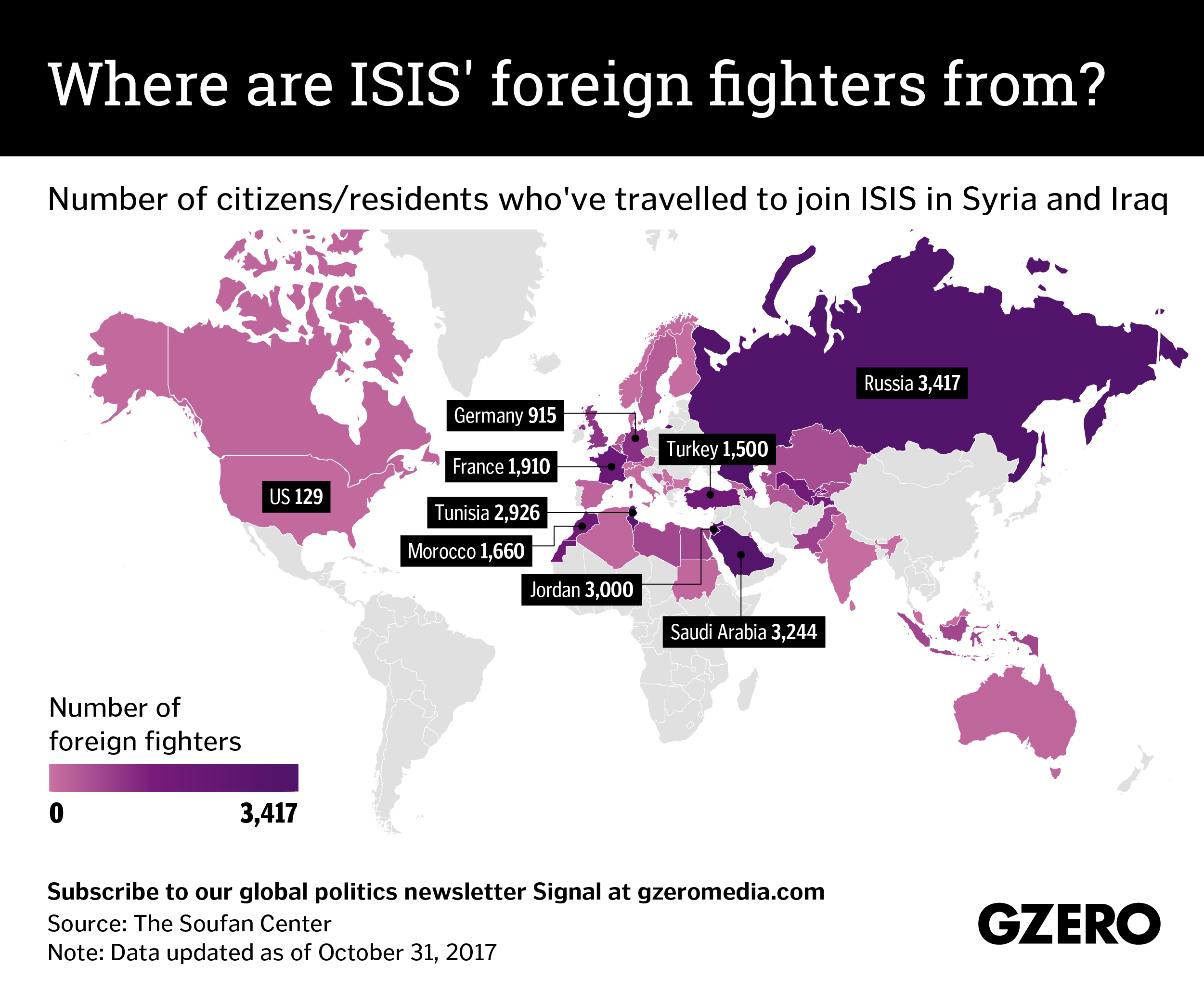Graphic Truth: Where are ISIS' foreign fighters from?
December 05, 2019
The collapse of the Islamic State's self-declared caliphate in Iraq and Syria has given rise to a host of new challenges for governments around the world. Turkey has captured thousands of ISIS fighters as a result of its offensive in northern Syria, many of whom are foreign nationals who left their home countries to fight with the Islamic State. To date, non-Middle East countries have mostly opposed ISIS fighters returning home, leaving them, and their spouses and children, in legal limbo. Here's a look at where these foreign fighters come from.
From Your Site Articles
